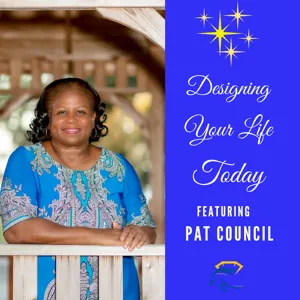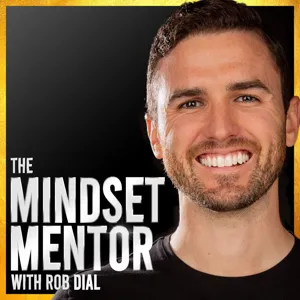Podcast Summary
Using commitment devices to achieve goals: Commitment devices can help reach goals, but require careful planning, adherence, and understanding of limitations. Seek help when needed.
Commitment devices can be effective tools to help us achieve our goals, but they require careful planning and adherence. In the podcast episode "Save Me From Myself," the speaker shares his personal experience with using a commitment device – Missouri's self-exclusion plan – to overcome his gambling addiction. However, he eventually found a loophole and was able to return to the casinos. This story highlights the importance of fully understanding the commitment device and being committed to following through with it, even when faced with temptation or challenges. The speaker's experience also underscores the importance of seeking help and support when struggling with addiction or other challenging behaviors. Commitment devices can be a powerful tool, but they should be used wisely and with a clear understanding of their limitations.
Commitment devices help individuals prevent future selves from making regrettable decisions: Commitment devices limit options and force future self to adhere to desired behavior, improving personal goals and overall well-being
Self-imposed bans, like the one Tony Belandran signed up for at casinos, are called commitment devices. These devices help individuals set up constraints to prevent their future selves from making decisions that their current selves might regret. Belandran's experience shows that although the logic of self-exclusion might not make sense, it can be effective in helping people avoid temptations and make better long-term choices. Economist Steve Levitt explains that commitment devices work by limiting one's options and forcing the future self to adhere to the desired behavior. An example of this is buying an expensive gym membership to ensure regular workouts. While it might be difficult to go through with the initial decision, the long-term benefits often outweigh the short-term inconvenience. In the end, commitment devices can be valuable tools in achieving personal goals and improving overall well-being.
The Power of Commitment Devices: Commitment devices, such as marriage or websites that impose penalties, can motivate individuals to achieve their goals. Even unconventional methods, like surgery or self-inflicted discomfort, can serve as effective motivation.
Commitment devices, which can range from marriage to websites that help you quit bad habits by imposing penalties, can be effective tools for achieving goals. Economist Steve Levitt uses extreme examples like bariatric surgery and self-inflicted discomfort to illustrate this concept. However, not everyone may find these methods appealing or practical. For those seeking to make positive changes in their lives, the question of whether life is worth living without stakes can serve as motivation. Adam Scott, a 35-year-old telecom policy expert, reflects on this concept as he grapples with the reality of having a young child and limited time. Ultimately, commitment devices, no matter how unconventional, can help individuals reevaluate their priorities and make meaningful changes.
Man Eliminates 42 Unhealthy Habits for 30 Days: Committing to eliminate unhealthy habits and holding oneself accountable through guilt, fear, and public declaration can lead to lasting change.
Adam Scott, an individual who took a serious introspective look at his habits, decided to eliminate 42 unhealthy practices from his life for 30 days. He recognized the value of assessing the importance of these habits and the potential impact of their absence. To strengthen his commitment, he used a combination of guilt, fear, and accountability by writing a $750 check to Oprah Winfrey, giving it to a friend, and making public his progress through YouTube videos. Although the novelty wore off and challenges arose, Adam persevered, demonstrating the power of commitment and self-discipline in making lasting changes.
The balance between commitment and flexibility: Commitment devices can help achieve goals but rigidity can lead to stress. Find balance and seek forgiveness for mistakes.
The use of commitment devices, such as Adam Scott's attempt to quit all 42 banned items cold turkey, can be effective in helping individuals achieve their goals. However, the rigidity of such commitments can also lead to self-inflicted guilt and anxiety when small slip-ups occur. As economist Steve Levitt argues, commitment devices may be seen as a farce due to their inflexibility and potential for causing unnecessary stress. The story of Adam Scott's experience highlights the importance of finding a balance between commitment and flexibility, and the value of seeking forgiveness and moving forward after making mistakes.
Personal commitment devices not foolproof: While commitment devices can aid goal achievement, they're not foolproof and may not always work as intended. Accountability measures like mandatory arrest and no-drop policies can have unintended consequences.
Personal commitment devices, while well-intended, are not foolproof solutions to help individuals stick to their goals. The speaker in this discussion shared her experience of using a commitment device to stay awake in class, but found herself dozing off despite her best efforts. Economist Anna Azer adds that the future self often rebels against the current self's decisions, making commitment devices less effective. However, there are circumstances where commitment devices could be beneficial, such as in the context of domestic violence. Laws like mandatory arrest and no-drop policies aim to increase accountability and reduce the number of dropped cases. But it's important to remember that these policies are not without controversy and can have unintended consequences. Ultimately, while commitment devices can be helpful, they should not be relied upon as the sole solution to achieving goals or addressing complex social issues.
Policies for reporting domestic violence: Mandatory prosecution policies increase reporting but data shows limited impact on reducing incidents.
Mandatory prosecution policies for domestic violence, which remove a woman's ability to drop charges once reported, act as commitment devices to encourage more reporting. However, it's less clear if these policies lead to a reduction in actual domestic violence incidents, as data on hospitalizations for assault among women did not decline significantly during this period. The increase in reporting suggests that this is a preferred policy by those it affects, but it's essential to acknowledge the limitations of the data and potential unintended consequences.
Impact of Domestic Violence Policies on Intimate Partner Homicides with Men as Victims: Domestic violence policies in California led to a decline in homicides with men as victims due to the availability of less costly and drastic 'policy-offered' devices (reporting abuse) compared to murder. However, the effectiveness relies on women's awareness of these policies.
The implementation of domestic violence policies, particularly in California, led to a significant decline in intimate partner homicides with men as the victims. This decline can be attributed to the availability of two commitment devices for women who are victims of domestic violence: the extreme device (murder) and the policy-offered device (reporting the abuse). The policy device is less costly and drastic compared to murder, making it a more appealing choice for women. Economically, this preference for one state of being over another is justified as long as there are no significant externalities or collateral damages. However, the effectiveness of these policies relies on women being aware of their existence, which is not definitively proven. Despite the limited evidence, the potential benefits of these commitment devices for victims and potential victims of domestic violence are worth considering.
Commitment devices help stick to goals: Using commitment devices, like gym memberships or personal trainers, can help individuals stay motivated and make exercise a consistent part of their lives, leading to improved overall well-being.
Commitment devices, whether self-imposed or imposed by others, can help individuals stick to their goals, even if they don't always see immediate success. The story of Tony Belandran and his failed gambling ban illustrates the imperfections of self-imposed commitment devices, while Adam Scott's successful cold turkey experience shows that even if the initial commitment fails, the end result might still be positive. In the realm of fitness, the challenge for most Americans is to become part of the elite 20% who meet exercise guidelines. The key to achieving this may be to find a workout routine that is enjoyable and improves one's overall well-being. Commitment devices, whether in the form of a gym membership or a personal trainer, can help individuals stay motivated and make exercise a consistent part of their lives. So, whether it's quitting a bad habit or starting a new healthy one, consider using a commitment device to help you reach your goals.



